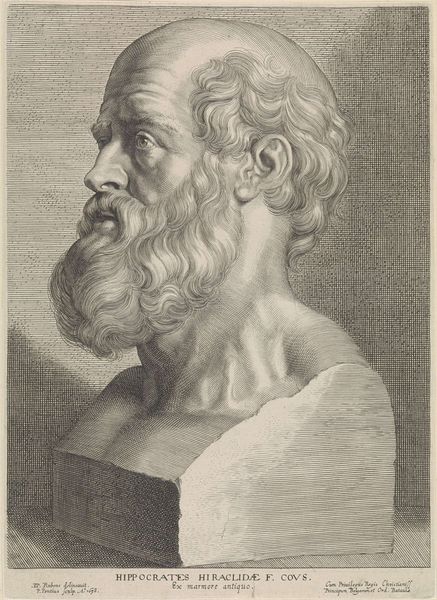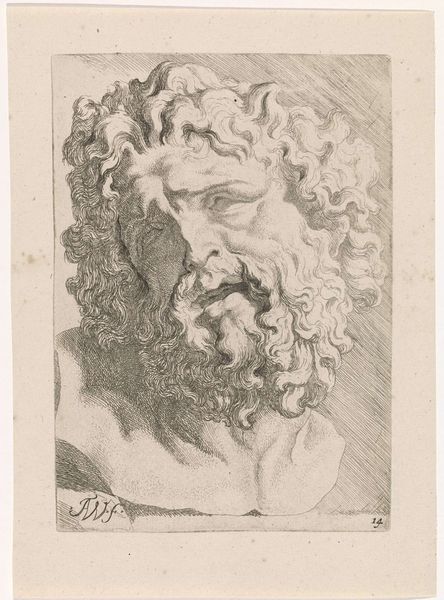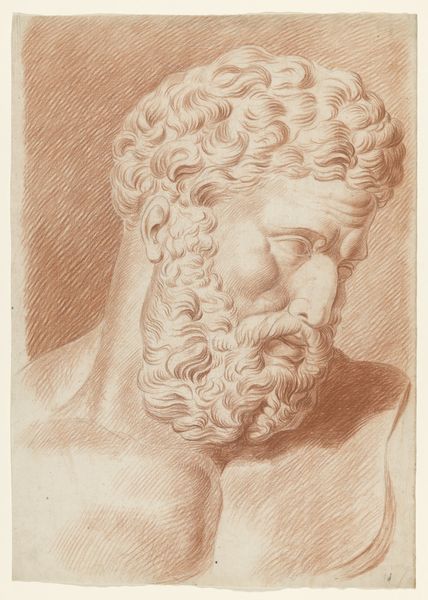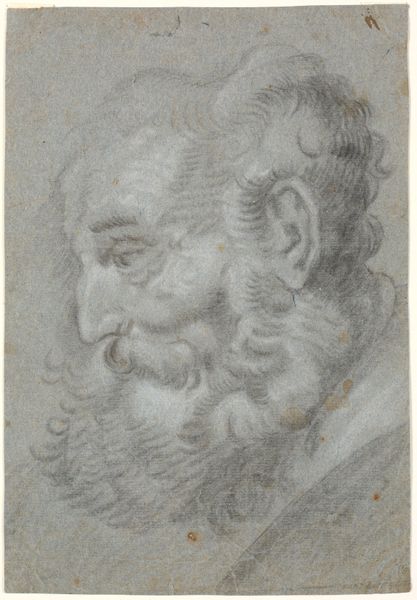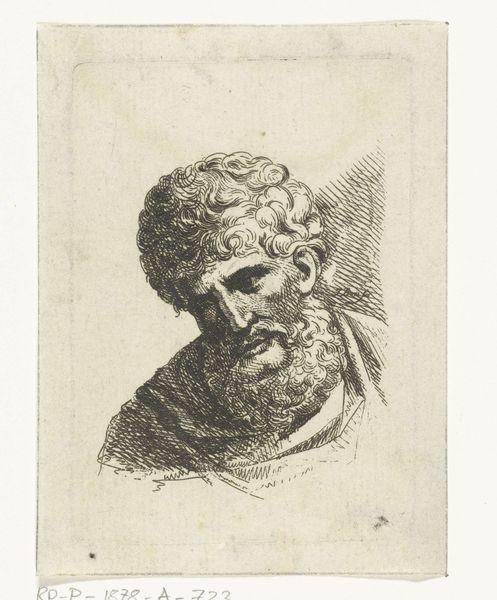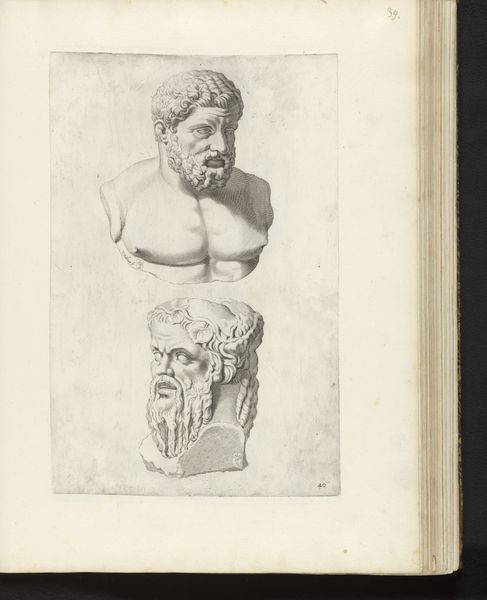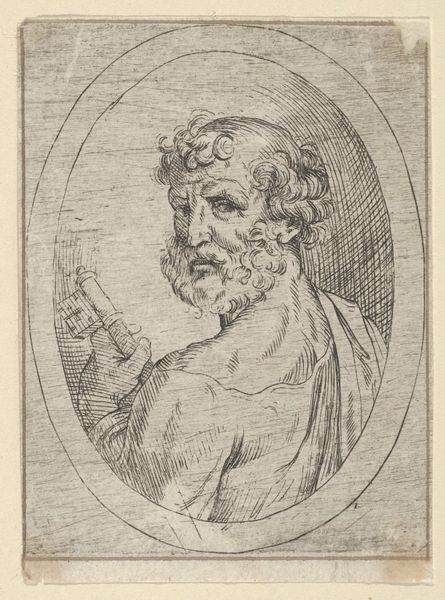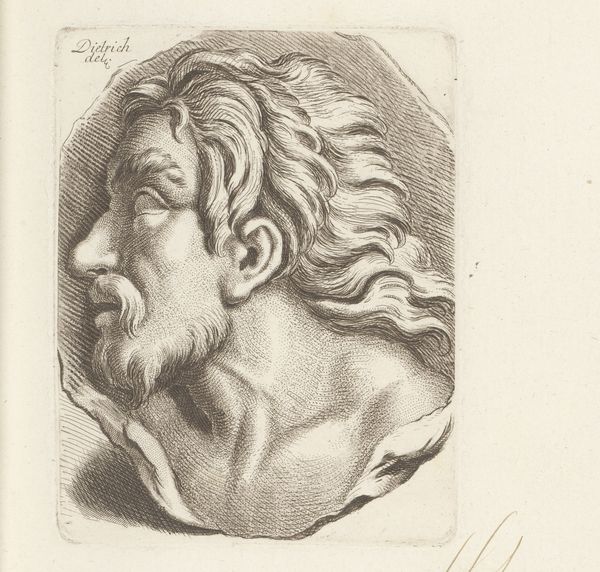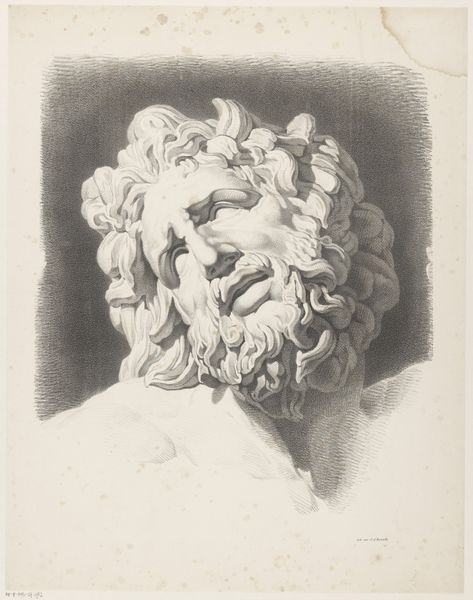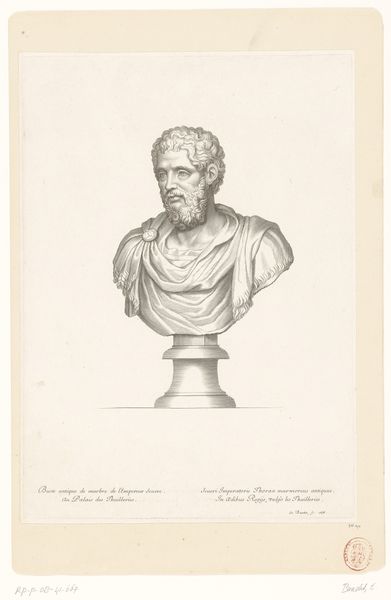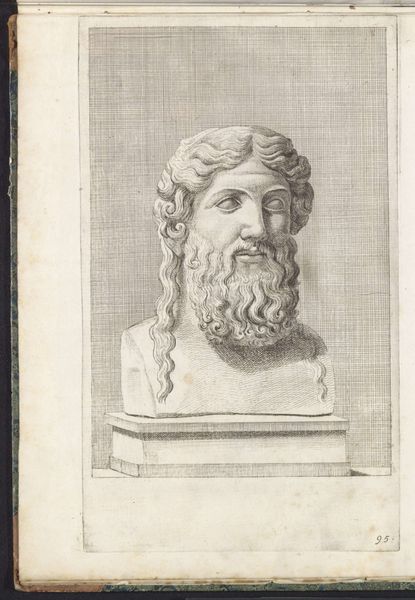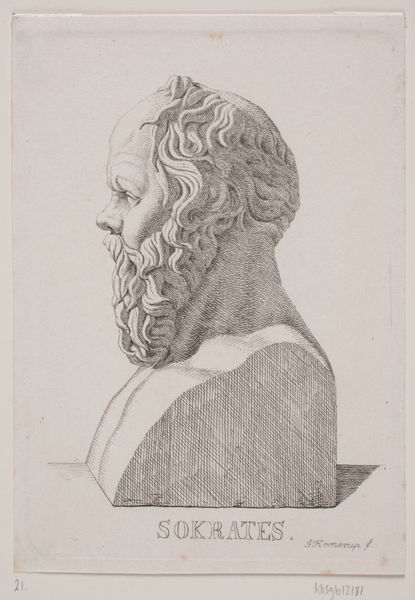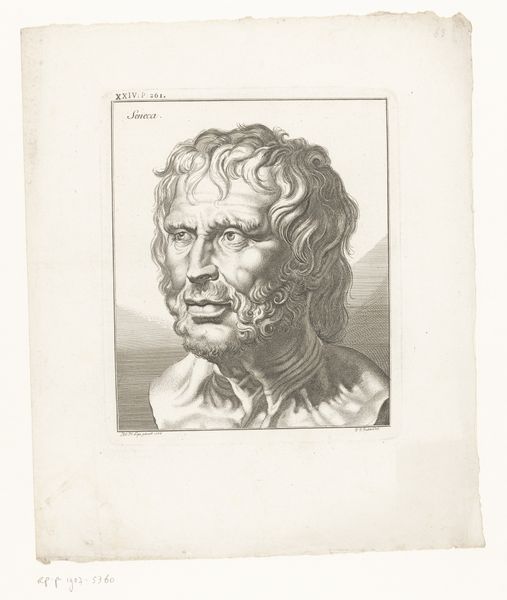
drawing, print, paper, pencil
#
portrait
#
drawing
# print
#
pencil sketch
#
classical-realism
#
paper
#
pencil drawing
#
pencil
Dimensions: 273 × 194 mm
Copyright: Public Domain
Curator: Here we have "Bust of a Bearded Man" by John Downman. This drawing, likely made with graphite pencil on paper, resides here at the Art Institute of Chicago. What are your first thoughts? Editor: It strikes me as intensely somber. The dramatic use of light and shadow, or chiaroscuro, evokes a sense of profound gravity and classical drama. There is masterful detailing within the rendering of the man's beard and curls. Curator: It's worth considering that artists like Downman often made such studies from classical sculptures and architectural fragments as part of their artistic education, a widespread practice that instilled classical aesthetics and ideals. Reproducing existing statues like this also broadened access and awareness during a period without widespread photography. Editor: Precisely! And observe how Downman has utilized delicate, thin strokes to model form, creating a wonderful sense of three-dimensionality despite the flatness of the medium. The subtlety of tonal variation is what conveys such refined detail in the face. Curator: The proliferation of this type of artwork, even in print form, catered to a rising class in England, keen on emulating aristocratic interests in classical art and history. Owning such a work, however modestly produced, could signify belonging and elevated taste. Editor: The slightly downturned gaze contributes so powerfully to the melancholy mood, doesn't it? And consider the negative space surrounding the bust, providing just the right amount of contrast without competing for the viewer's attention. It pushes our focus so squarely towards the subject. Curator: That use of negative space speaks to its function. Artists weren't trying to fill every corner but aiming to educate and communicate values and ideas that shaped culture through public art. The social dimension is important here. Editor: Ultimately, Downman’s refined draftsmanship serves not only to faithfully record a form, but to evoke emotion and inspire contemplation. It's in the simplicity and the elegance of his line work that we truly find its power. Curator: Well, that’s given me a new way to think about this piece, recognizing how social function doesn't negate, but can rather inform artistic form. Thank you.
Comments
No comments
Be the first to comment and join the conversation on the ultimate creative platform.
